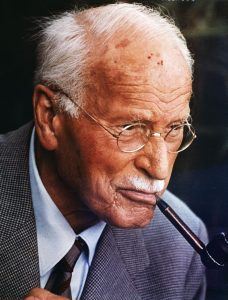Modern psychotherapy has its roots in the pioneering work of Sigmund Freud, often referred to as the father of psychoanalysis. In the late 19th century, Freud introduced the concept of exploring the unconscious mind through talk therapy, laying the groundwork for many therapeutic practices used today. Carl Jung expanded on these concepts by introducing analytical psychology, emphasizing archetypes and the collective unconscious. Concurrently, John Bowlby developed Attachment Theory, highlighting the critical importance of early emotional bonds between children and their caregivers—a concept that has profoundly influenced our understanding of human development and relationships.

Over the past century, psychotherapy has evolved significantly, developing through three major “waves” or movements. Each wave built upon past ideas and interventions, expanding the therapeutic landscape to better address the complexities of human experiences. By exploring these waves, we can gain insight into how therapeutic approaches have adapted to meet diverse emotional and psychological needs.


First Wave: Behavioral Therapies
The first wave of psychotherapy, emerging in the early 20th century, focused on observable behaviors and the principles of learning. Pioneers like Ivan Pavlov and B.F. Skinner emphasized that behavior is learned through conditioning and can be modified through reinforcement. Techniques such as systematic desensitization and exposure therapy were developed to treat phobias and anxiety disorders.
Key Figures:
- Ivan Pavlov: Known for classical conditioning, demonstrating how neutral stimuli can elicit responses through association.
- B.F. Skinner: Developed operant conditioning, focusing on how reinforcement and punishment shape behavior.
- Joseph Wolpe: Introduced systematic desensitization, a method to reduce phobic reactions through gradual exposure.
Applications:
- Effective in treating specific phobias, obsessive-compulsive behaviors, and other maladaptive behaviors through conditioning techniques.
Evolution of Behavioral Therapies: Introduction of ERP
While the foundational behavioral therapies laid the groundwork, the field continued to evolve. In the 1960s, British psychologist Vic Meyer developed Exposure and Response Prevention (ERP) as a specialized behavioral technique to treat OCD. ERP involves two key components:
- Exposure: Gradually confronting the thoughts, images, objects, and situations that trigger anxiety and obsessions.
- Response Prevention: Deliberately refraining from engaging in the compulsive behaviors that typically follow these triggers.
This method helps individuals learn that their anxiety will naturally decrease over time without performing compulsions, thereby breaking the cycle of obsession and compulsion. ERP is widely regarded as the gold-standard treatment for OCD and is supported by extensive clinical research.
While ERP incorporates cognitive elements, its primary focus on behavior modification through exposure techniques places it firmly within the behavioral tradition. By integrating ERP into the behavioral therapy framework, practitioners expanded the tools available to address complex conditions like OCD, demonstrating the adaptability and growth of behavioral interventions over time.
Second Wave: Cognitive-Behavioral Therapies (CBT)
Building upon behavioral principles, the second wave introduced the significance of internal thought processes. Aaron Beck and Albert Ellis recognized that our thoughts influence our emotions and behaviors. Cognitive Behavioral Therapy (CBT) combines cognitive and behavioral techniques to help individuals identify and challenge distorted thinking patterns, leading to improved emotional regulation and behavior.
Key Figures:
- Aaron Beck: Developed Cognitive Therapy, focusing on identifying and modifying negative thought patterns.
- Albert Ellis: Created Rational Emotive Behavior Therapy (REBT), emphasizing the role of irrational beliefs in emotional distress.
Applications:
- Widely used for depression, anxiety disorders, and other mood disorders.
- Structured, time-limited approach focusing on present issues and skill development.
Third Wave: Mindfulness and Acceptance-Based Therapies
The third wave integrates mindfulness and acceptance strategies, emphasizing the context and function of psychological experiences rather than just their content. Therapies like Acceptance and Commitment Therapy (ACT), Dialectical Behavior Therapy (DBT), and Mindfulness-Based Cognitive Therapy (MBCT) encourage individuals to accept their thoughts and feelings without judgment and commit to actions aligned with their values.
Key Therapies:
- Acceptance and Commitment Therapy (ACT): Developed by Steven C. Hayes, ACT emphasizes psychological flexibility through acceptance and committed action towards personal values.
- Dialectical Behavior Therapy (DBT): Created by Marsha Linehan, DBT combines acceptance and change strategies, particularly effective for borderline personality disorder.
- Mindfulness-Based Cognitive Therapy (MBCT): Combines mindfulness practices with cognitive therapy techniques to prevent depressive relapse.
Applications:
- Effective for a range of conditions, including chronic depression, anxiety, and personality disorders.
- Emphasizes acceptance, mindfulness, and alignment with personal values.
Further Reading: Explore More About These Therapies
Cognitive Behavioral Therapy (CBT)
- American Psychological Association (APA): Offers a detailed overview of CBT, its applications, and effectiveness.
- Beck Institute for Cognitive Behavior Therapy: Provides insights into the principles and practices of CBT.
- National Health Service (NHS): Explains how CBT works and its use in treating various mental health conditions.
Rational Emotive Behavior Therapy (REBT)
- Albert Ellis Institute: The founding organization for REBT, offering extensive information on the therapy’s foundations and applications.
- REBT Network: Provides resources, articles, and tools related to REBT.
- Verywell Mind: Offers an accessible summary of REBT, including its techniques and benefits.
Acceptance and Commitment Therapy (ACT)
- Association for Contextual Behavioral Science (ACBS): The primary organization for ACT, offering resources and research.
- Verywell Mind: Provides an overview of ACT and its principles.
- Psychology Today: Features articles and explanations about ACT and its applications.
Dialectical Behavior Therapy (DBT)
- Behavioral Tech: Founded by Marsha Linehan, this site offers comprehensive information on DBT training and resources.
- Cleveland Clinic: Provides an overview of DBT, including its purpose and the conditions it treats.
- Verywell Mind: Offers insights into DBT techniques and its effectiveness.
Mindfulness-Based Cognitive Therapy (MBCT)
- Oxford Mindfulness Centre: A leading institution in MBCT research and training.
- University of Massachusetts Medical School: Provides information on MBCT programs and their benefits.
- Verywell Mind: Offers a user-friendly explanation of MBCT and its applications
Exposure and Response Prevention (ERP)
- International OCD Foundation: Exposure and Response Prevention (ERP): A community “to provide help, healing, and hope”. The site includes many resources and psychoeducation.
- Psychologytoday: An overview of ERP
- McLean Hospital: A Guide to Exposure and Response Prevention Therapy

